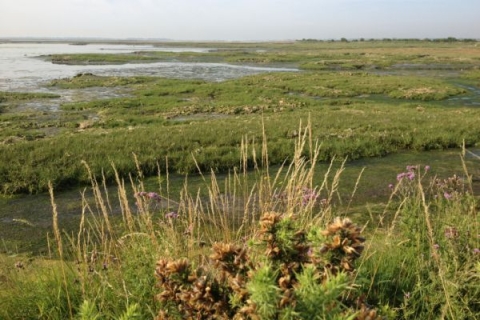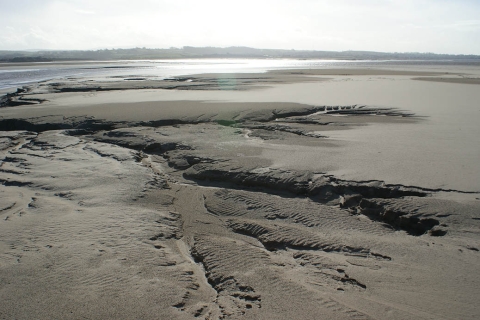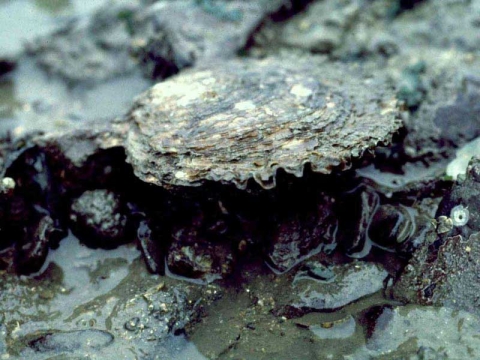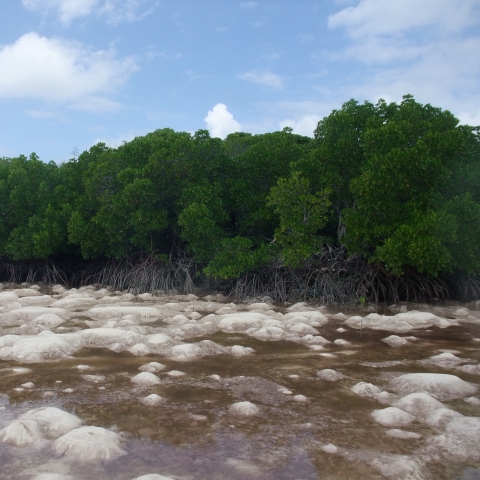

They provide the equivalent of over £1.1 billion in environmental benefits every year
21 August 2020
3 min read
The Solent’s coastal habitats provide the equivalent of over £1.1 billion in environmental benefits every year, according to a new study by researchers from the University of Portsmouth and the Plymouth Marine Laboratory.
Excessive nutrients (nitrogen and phosphorus) are a global aquatic environmental problem and often cause large-scale algal blooms in the Solent. Similarly, global increases in carbon dioxide (CO2) and its strong influence on climate change, have led to marine ecosystems storing significant amounts of CO2 (often referred to as blue carbon) through accumulation in vegetation and burial in sediments, known as ‘sequestering’.

Intertidal and seabed sediments, provide ecosystem services worth £509 million and £395 million per year respectively.
The Environment Agency funded study, published in the journal Science of The Total Environment, assessed the capacity of seven key coastal habitats – intertidal mudflats, mat-forming green seaweed, seabed sediments, saltmarsh, seagrass, reedbeds and native oyster reefs – to remove nitrogen and phosphorus from coastal waters and sequester blue carbon.
The equivalent monetary value of removing these was then calculated.
The researchers found that:
- Submerged aquatic habitats such as seagrass and oyster reefs remove about £73 million worth of nitrogen, phosphorus and carbon every year, while wetlands such as saltmarsh and reedbeds remove about £168 million per year.
- Less complex ecosystems, such as intertidal and seabed sediments, provide ecosystem services worth £509 million and £395 million per year respectively.
- In monetary terms, this equates to £1.1 billion in nutrient reductions and blue carbon stored in coastal sediments annually.
Coastal habitats are a vitally important component of the UK's natural capital, but their contributions are often unrecognised and undervalued. Our results show they could provide relatively cost-effective investment alternatives to human-generated solutions.
Dr Stephen Watson, Institute of Marine Sciences
The researchers calculated the amount of each habitat within the Solent European Marine Site (SEMS), which stretches from Lymington Harbour to Chichester Harbour on the south coast of England. They then used a replacement cost valuation method to calculate the economic values. This compares the cost of replacing one hectare of habitat with human-generated alternatives to remove the same amount of nutrients (for example, how much nitrogen it takes out versus upgrading wastewater treatment plants).
Lead author Dr Stephen Watson, from the Institute of Marine Sciences at the University of Portsmouth, said: “Coastal habitats are a vitally important component of the UK's natural capital, but their contributions are often unrecognised and undervalued. Our results show they could provide relatively cost-effective investment alternatives to human-generated solutions.”
Saltmarsh habitats were found to be highly valuable in removing nitrogen on a per hectare basis and over twice as valuable as seagrass beds. However, the study also estimated that the Solent has lost 65 per cent of its saltmarsh in the last century.

A native Solent oyster
Charlotte Lines, Principal Planning Officer Sustainable Places West for the Environment Agency, said: “It is an exciting step forward in being able to place a real economic value on our natural environment, in and around the Solent. We hope this study gives local decision makers and those that set policy the assurances they need to in order to provide investment in our natural environment. It is evident that our natural environment has a multi- facetted role from tackling climate change to increasing economic productivity. Our coastal habitats deserve protection, but more importantly future investment if they are going to survive and thrive.”
The Solent is a great example of a coastal region under threat from many human activities including habitat loss, nutrient inputs, climate change and pollution such as microplastics. These will have a significant impact on the capacity of habitats to remove nutrients and store carbon.
Our coastal habitats deserve protection, but more importantly future investment if they are going to survive and thrive.
Charlotte Lines, Environment Agency
The assessment also shows that placing a monetary value on the services (e.g. remove nutrients or store blue carbon) provided by a habitat is an effective way for communicating the importance of often overlooked coastal habitats that are in decline due to a multitude of human pressures.
Professor Nicky Beaumont, Head of Science: Sea and Society at Plymouth Marine Laboratory, said: “This research demonstrates that our natural environments, whilst valuable in their own right, also play a crucial role in supporting the economy and human wellbeing. This work details much needed locally based evidence that the coastal habitats of the Solent provide valuable nature based solutions to the issues of climate change and nutrient pollution. Maintaining and restoring these environments will lead to continued benefits into the future, whereas their degradation will result in tangible costs.
“Providing this evidence in monetary terms enables the communication of the value of these environments to a broader audience, including to government bodies and businesses.”
Study co-author Dr Jo Preston from the Institute of Marine Sciences said: “Our ecosystem service valuations provide a widely comparable methodology that can be applied to other coastal marine systems to support meaningful policies to restore and protect the marine environment for future generations.”
Funding awarded for project to lessen global warming impact of aeroplane contrails
18 August 2022
5 min read

Study reveals how climate change can significantly impact carbon rich ecosystem
23 June 2022
9 min read

